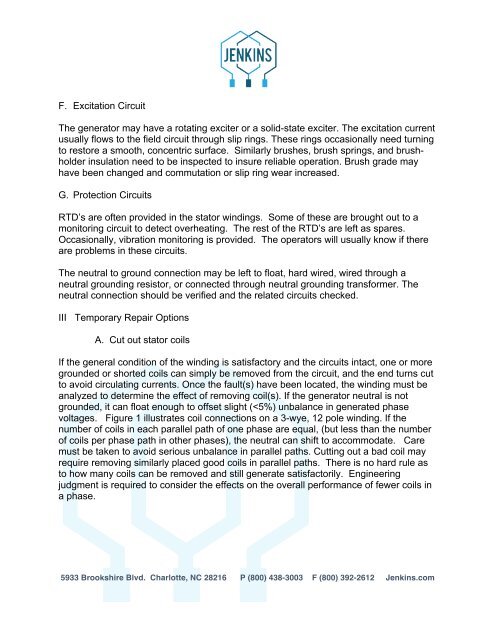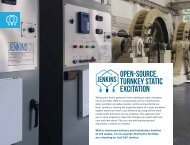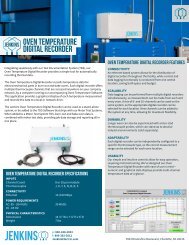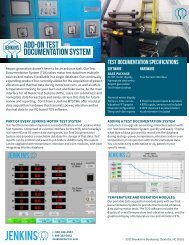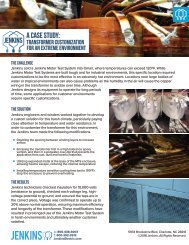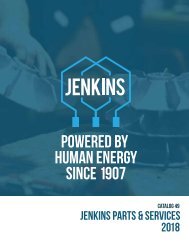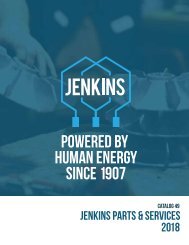Jenkins Options for Generator Rewind Whitepaper
Create successful ePaper yourself
Turn your PDF publications into a flip-book with our unique Google optimized e-Paper software.
F. Excitation Circuit<br />
The generator may have a rotating exciter or a solid-state exciter. The excitation current<br />
usually flows to the field circuit through slip rings. These rings occasionally need turning<br />
to restore a smooth, concentric surface. Similarly brushes, brush springs, and brushholder<br />
insulation need to be inspected to insure reliable operation. Brush grade may<br />
have been changed and commutation or slip ring wear increased.<br />
G. Protection Circuits<br />
RTD’s are often provided in the stator windings. Some of these are brought out to a<br />
monitoring circuit to detect overheating. The rest of the RTD’s are left as spares.<br />
Occasionally, vibration monitoring is provided. The operators will usually know if there<br />
are problems in these circuits.<br />
The neutral to ground connection may be left to float, hard wired, wired through a<br />
neutral grounding resistor, or connected through neutral grounding trans<strong>for</strong>mer. The<br />
neutral connection should be verified and the related circuits checked.<br />
III Temporary Repair <strong>Options</strong><br />
A. Cut out stator coils<br />
If the general condition of the winding is satisfactory and the circuits intact, one or more<br />
grounded or shorted coils can simply be removed from the circuit, and the end turns cut<br />
to avoid circulating currents. Once the fault(s) have been located, the winding must be<br />
analyzed to determine the effect of removing coil(s). If the generator neutral is not<br />
grounded, it can float enough to offset slight (


